section1: family
1. The seductive theatrical installation Pink Sofa (1996, pictured) by the Korean feminist artist Yun Suk-nam has recently undergone conservation treatment. This early installation is an indictment of the oppression of Korean women in a patriarchal society – it expresses both painful personal experiences and the artist’s fear of returning to domestic life. She was a housewife and mother before deciding to become an artist at the age of 40. Although she studied calligraphy, she never received any formal art training. She began by painting her own mother, taking inspiration from the working-class widow who had raised six children alone during difficult times.
The series ‘Pink Room’ reflects on motherhood, in which she reflects on her own story as a middle-aged middle-class housewife and mother, as well as the painful memories of women’s oppression, and extends their intergenerational social roles as non-participants in Korean society.
Curator Soyeon Ahn speculates: ‘This brightly coloured work expresses the desire of women to escape from society rather than be accepted by it.’
The centrepiece of the installation is a baroque-style sofa – a symbol of European taste and wealth and a style that was popular in Korea at the time. Yoon Seoknam has reupholstered the recovered sofa in bright Korean silk: ‘Pink is an uncertain emotion, especially in women, and it comes from the feeling that they have nowhere to fit in the world.’ Yoon has modified the sofa’s legs, which seem to be teetering on huge metal spikes. These sinister supports are inspired by the small knives – po-ding – that women carried for self-defence during the Joseon Dynasty (1392–1910). The cushions are pierced with spikes, making the piece unusable for anyone except the person sitting in the corner: a figure made from reclaimed wood, wearing a hanbok (traditional Korean clothing), painted and decorated with mother-of-pearl, alluding to the premodern era. However, this timeline is interrupted by the modern figure, almost marginalised by the plastic beads covering the floor. Both women are in isolation.
Created during a pivotal period in Yoon Seok-nam’s artistic career, Pink Sofa was set against the backdrop of the Korean women’s movement. It was relevant when it was conceived 25 years ago, and it remains so today. This important installation is a critique of the deeply entrenched gender inequality in society, conveying a strong message of female oppression while also giving a sense of optimism.
I chose this work of art first of all because of its unique installation shape. The work is based on a piece of furniture that can be found in every home – the sofa. People may think of the sofa as being associated with the warmth of home, a place to rest after work, and a place for the family to enjoy happy conversations together. However, this work of art is more about exposing the oppression behind this warmth, with the sofa pierced with long nails. which makes me wonder whether the silent contribution of women or mothers is behind this kind of warm East Asian family. Is the complex emotion of women trapped in the role of taking care of the family but also taking care of the family being taken seriously? These are the questions that we need to think about today. In addition, I think this work also has a strong connection with the exhibition venue I hope for. I consider placing it in the living room instead of the position of an ordinary sofa.
1. Soyeon Ahn, ‘Yun Suk-nam’ [essay] attached to Acquisition Proposal for Preparatory drawing for ‘Pink sofa’, dated 27 June 1997, QAGOMA Research Library, p.142.
2. Yun Suk-nam, ‘Detailed provenance’ form, QAGOMA Research Library
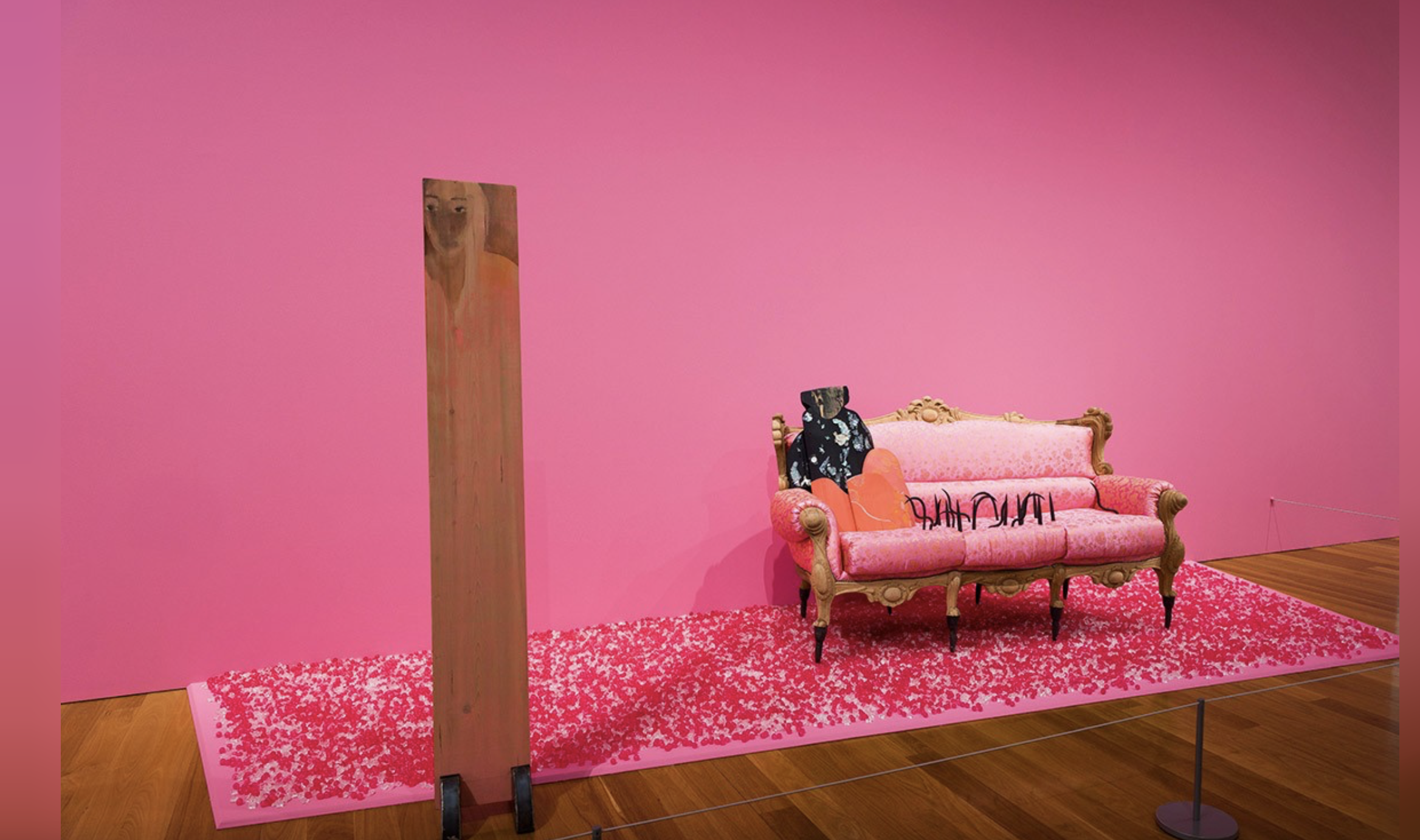
2.
This work is an installation art piece called ‘Insight’ created by Chinese artist Zhang Xiaoli.
The artist’s creative concept: The material chosen is a traditional Chinese wedding double happiness plate, and each one is supported by old magazine paper with a picture of a woman printed on it. Through the cut-outs, you can see the dazzling Chinese character for happiness. The work uses the metaphor of a tray that symbolises happiness and blessings to consider what the Chinese marriage system means for women. In most Asian families, women are expected to marry young and have children, as this is seen as the perfect way to achieve happiness. Even if some women don’t want to get married young, they will still be pressured to do so by their elders. However, we all know that once married, the next step may be to face the pressure to have children. Women may be forced to stay at home to give birth and take care of the children. Many positions in society are also not friendly to pregnant women, and many mothers face career interruptions. Behind this kind of happiness and bliss is an unspeakable selfless dedication. For this work, I am considering placing it in the bedroom to interact with other exhibits on site.
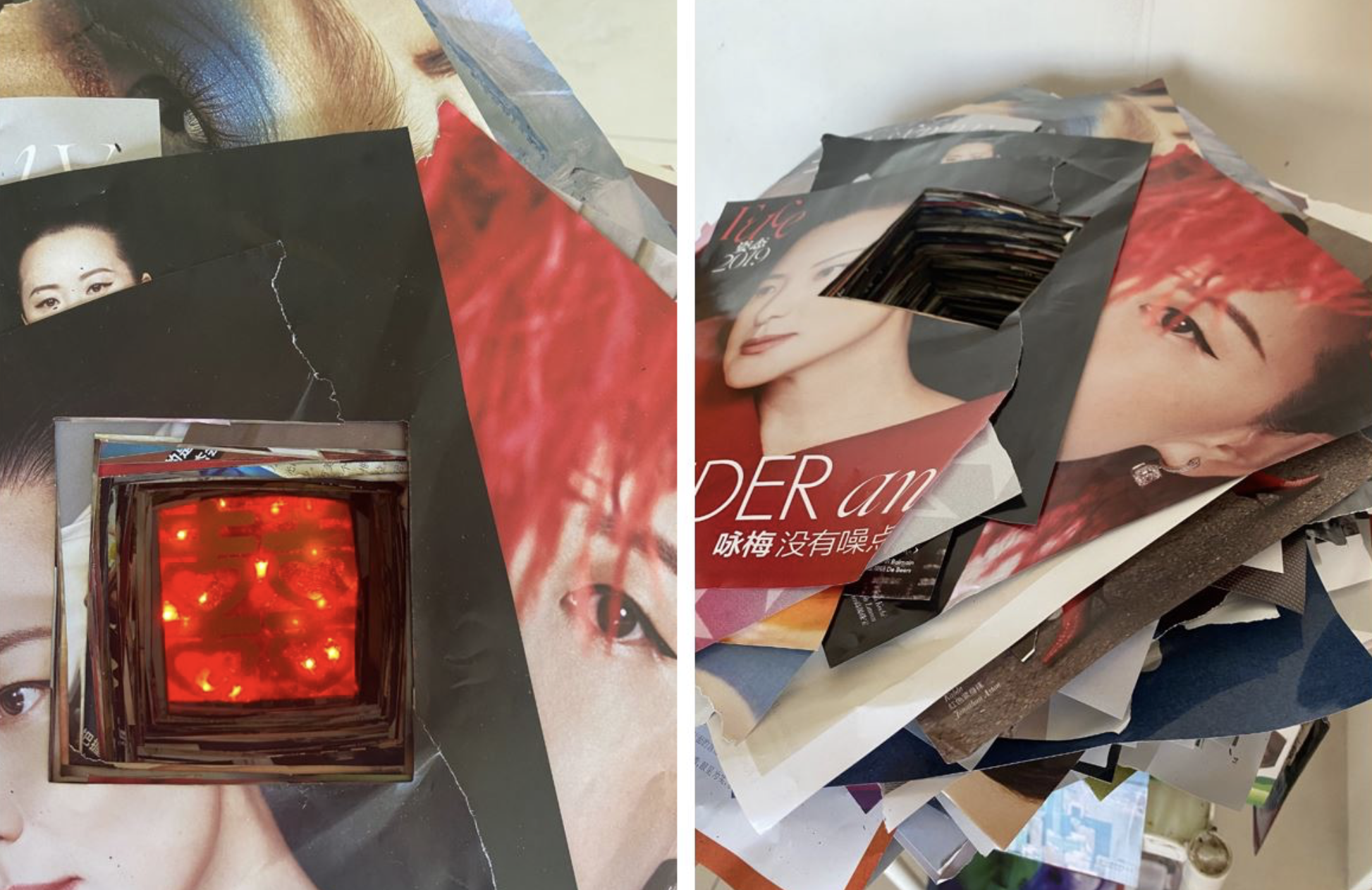
3.
This work is part of Lin Tianmiao’s series ‘Mother!!’. These works are not a cult of worship or sentimental tribute to mothers, but an indictment of aging and motherhood
The sculpture is a headless female body with the marks of childbirth and ageing. Made of pure white silk, she is covered in small balls of thread that look ominous, like parasite eggs or tumours festering inside her. In Chinese slang, the word for ‘mother’, ma de, is also a swearword, so the language carries a deliberately chosen pejorative tone. This subtle ambiguity provides the audience with a special platform for interpretation.
The strange ‘landscape’ created by this disturbing sculpture is reminiscent of the images discussed by Jacques Lacan and his materialisation of the ‘image’, that is, the formation of a shape through the cognitive perception of psychoanalysis, mixing time and space in the imagination. Through these deep psychological states and the contradictions in the process, Lin Tianmiao explores the relationships between body and mind, society and the natural world, moral and material values, reason and emotion – all of which are closely linked to the concepts of middle age and femininity.
Her explanation of another installation, ‘Gaze’, which consists of a crouching female figure with a computer screen for a head, may help to understand. Behind her are eggs on the lawn. She says: ‘I probably wouldn’t have created this work if I hadn’t become a mother. I was no longer young when I decided to have children. Nevertheless, the decision was very heavy for me. For me, giving birth to and raising children is a very stressful and burdensome process. For many years, I didn’t have the courage to take on this responsibility. And when I finally made up my mind, it was still very difficult. Sometimes, I fantasise about an easy solution. I imagine myself to be a frog or a fish, which can lay its eggs and then leave, without having to raise and educate them, and I can go on living my life. Of course, this is pure fantasy. I wanted to combine my primal urges with contemporary emotions in this work.
So this sculptural installation in Mother can also be seen as a reflection of the significant harm done to women’s bodies by childbirth and child-rearing, with the figure deformed, ageing accelerated, and the after-effects of childbirth left behind, which we can also understand as tumours eroding the female body. In addition, in today’s society, where female appearance anxiety is so serious, at least in Asia, most women find it difficult to maintain their figure while giving birth and caring for their children, and it is difficult to resist this kind of aging. However, they do not receive the respect they deserve, and there are countless insults to women’s appearance. So we can’t help but wonder what having children brings to women.
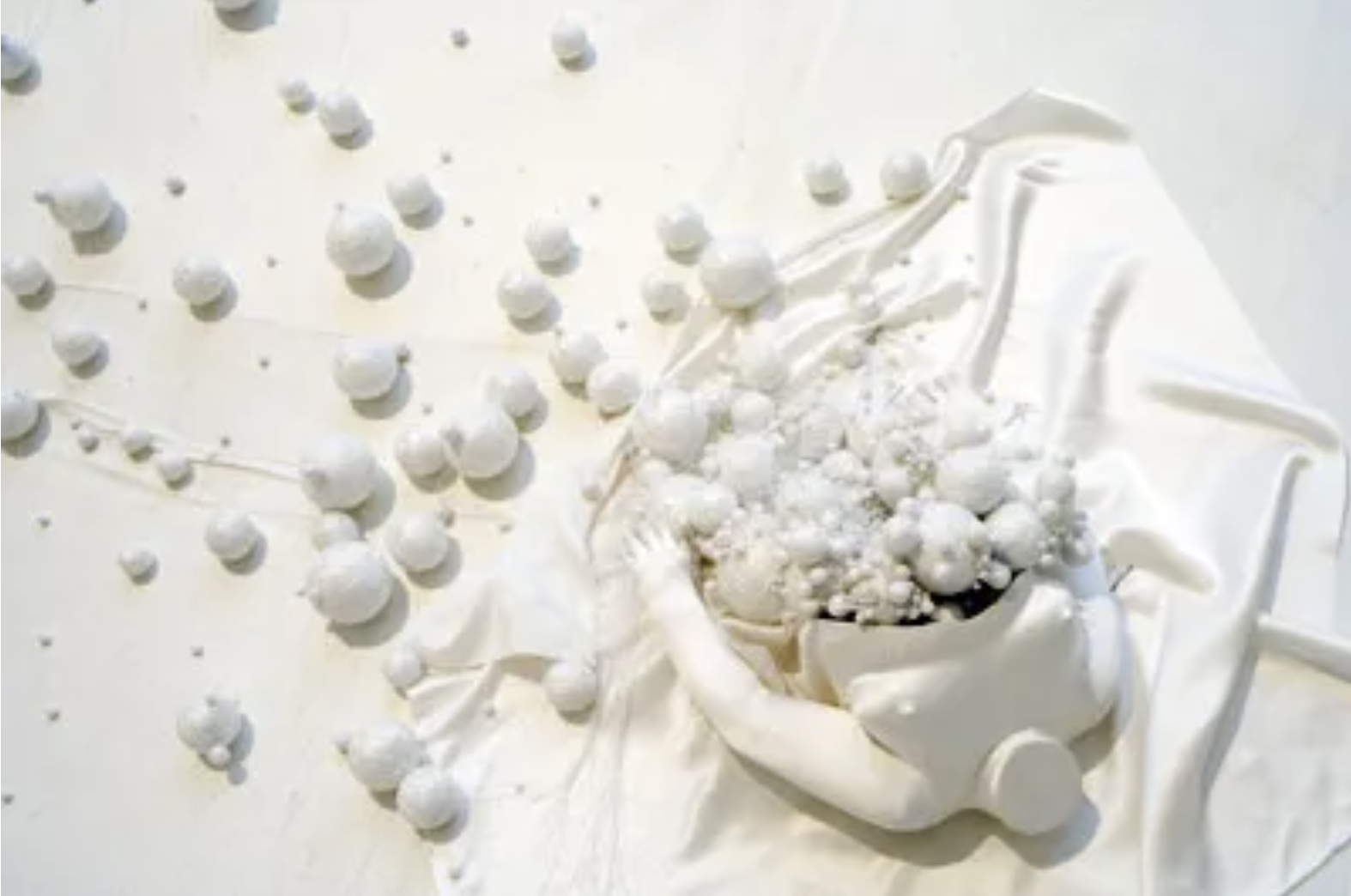
4.
Japanese artist Ruri has been working on her masterpiece, ‘Imposing Words – Embroidery of Modern Family Words’ since 2013. These imposing large characters are derived from words that Ruri wrote casually that caused her discomfort, such as housewife, professional woman, and other words that define women’s identity.
Starting from the words, she designed corresponding patterns and deliberately embroidered them on particularly ‘feminine’ household items such as placemats and handkerchiefs. For example, the third insured person refers to a member of the national insurance population whose spouse is a wage earner but who has no income of their own. The Japanese term for head of household means head of the household. Ruri said that her friend’s husband earns less than his wife but insists on registering himself as the head of the household. The large, bold letters have destroyed the otherwise peaceful domestic objects, like a loud cry embroidered on the fabric. However, the light-hearted elements seem to mock the seriousness of the underlying theme, leaving the viewer with mixed feelings, coexisting with both obedience and rebellion. ‘パート’ means part-time work, a typical example being the stay-at-home mother who takes a part-time job at the supermarket to supplement her husband’s salary. ‘テレワーク’ means working from home. Telecommuting has become common in the era of the pandemic, but Ruri recalled that 15 years ago, when she had just graduated, she applied to her company to work from home because she was pregnant, and the response was: We can’t break the rules for you alone. Because hiring a domestic helper is not popular in Japanese society, mothers are responsible for taking care of their children and doing the housework for the whole family. Ruri has always been taught that a mother’s labour is a labour of unconditional love, and she has never thought that her selfless contribution to the family could be measured in money, just equivalent to the salary of an unqualified domestic helper. Another example is the term ‘駐妻’, which refers to a wife who accompanies her husband when he is transferred to another country for work. These names, which are unique to women, have become part of artistic creation, but they also bring women invisible labour that is akin to moral enslavement.
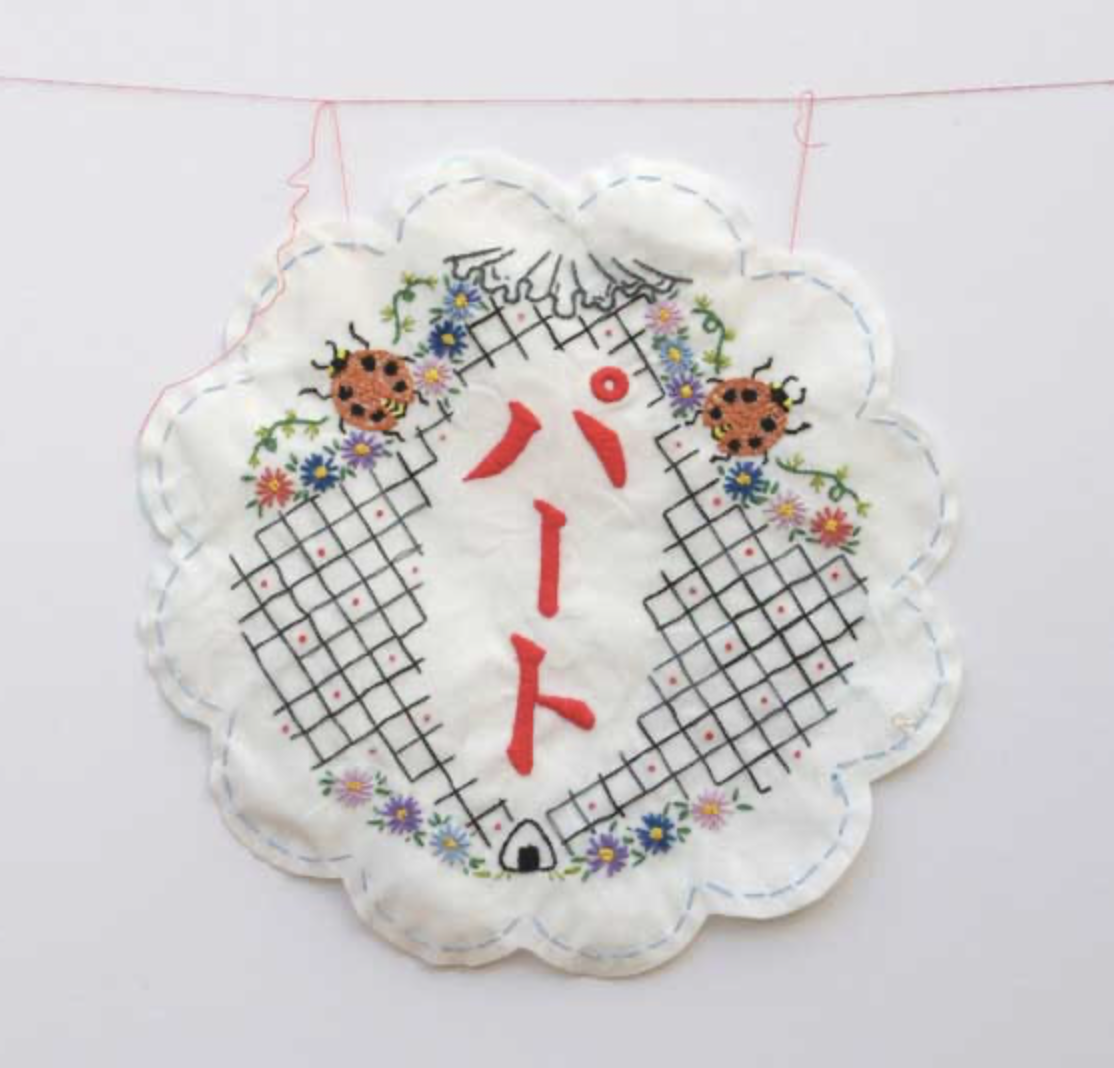
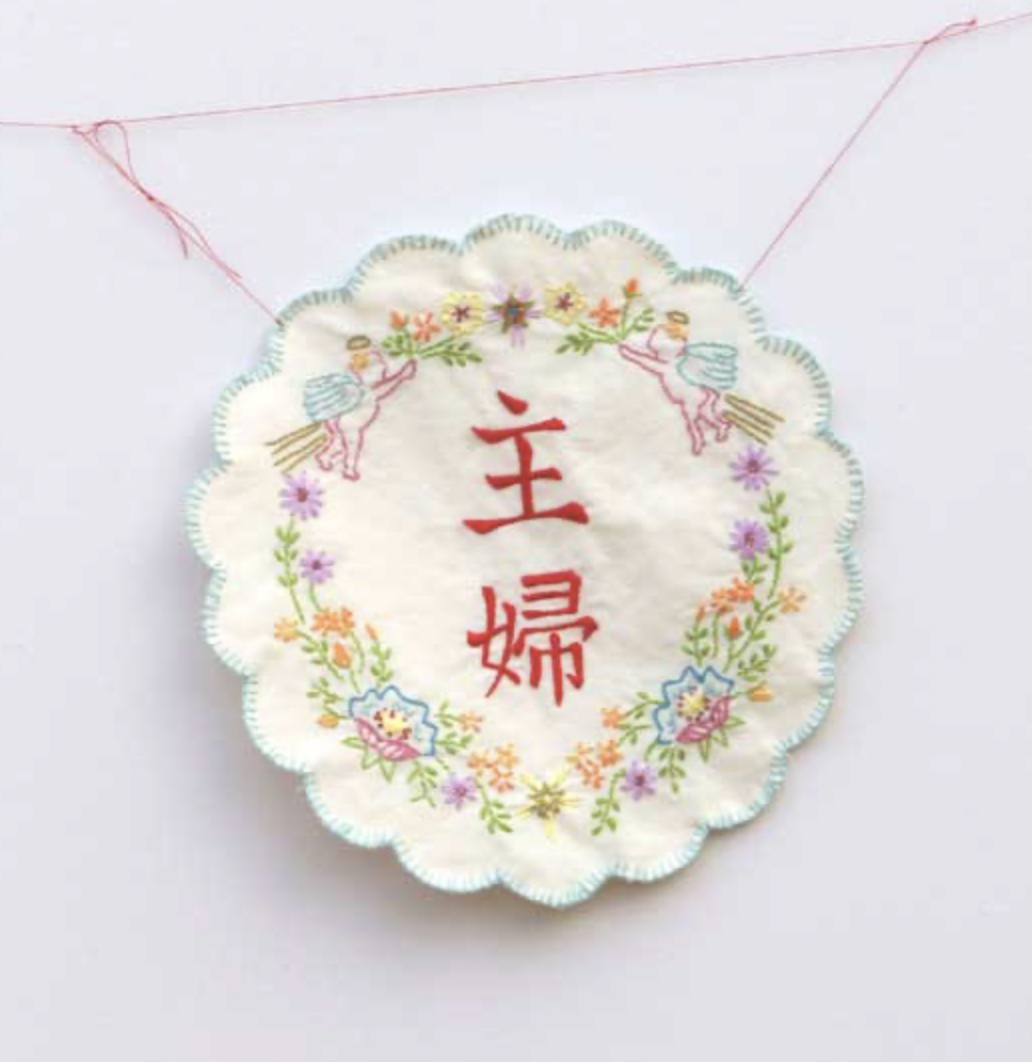
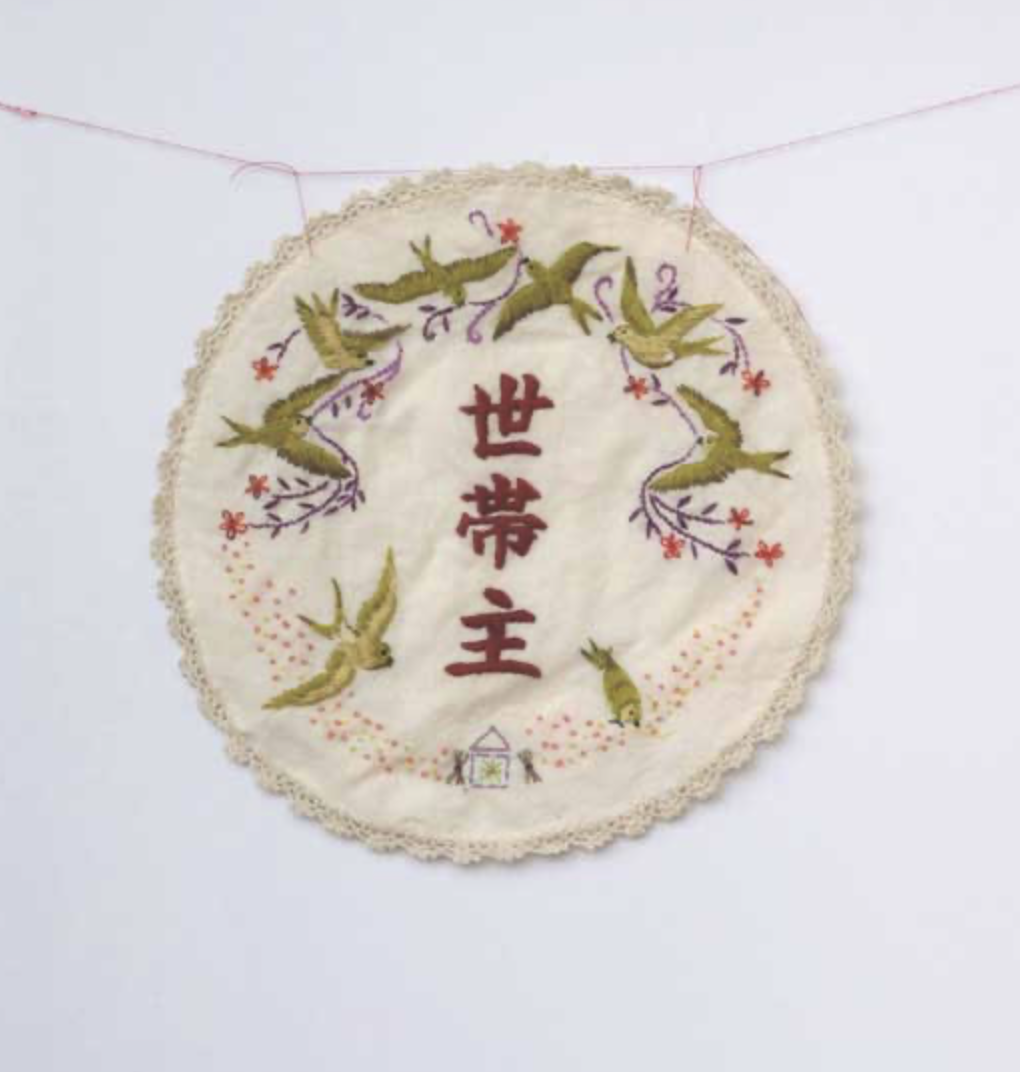
5.
This work is called She and her Dishcover and was created by Amanda Heng. Born in Singapore in 1951, Heng has participated in exhibitions around the world since 1987, including Japan, the United States and Thailand. Heng’s work deals mainly with issues of self-identity and feminism, expressed through a variety of media, including installations and performance art. This installation attempts to connect with the psychology and nature of women, who are relegated to kitchen roles and considered inferior in a world dominated by men. It is not only a commentary on the social status of women but also an expression of self-discovery and acceptance, which depends on women’s self-recognition of their integrity and legitimacy in all aspects.
This makes us reflect on the stereotypical role of women in the family, because such a role seems to require taking care of all the complicated affairs of the family, and because this labour seems to be justified by the stereotypes that have always existed, we need to rethink the invisible oppression of women.
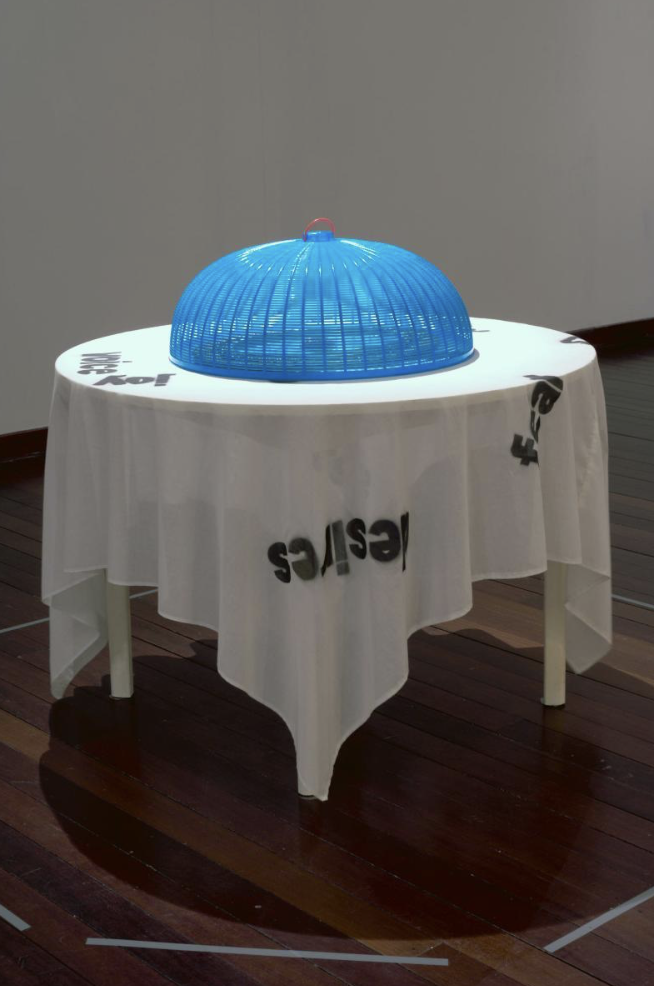


Leave a Reply